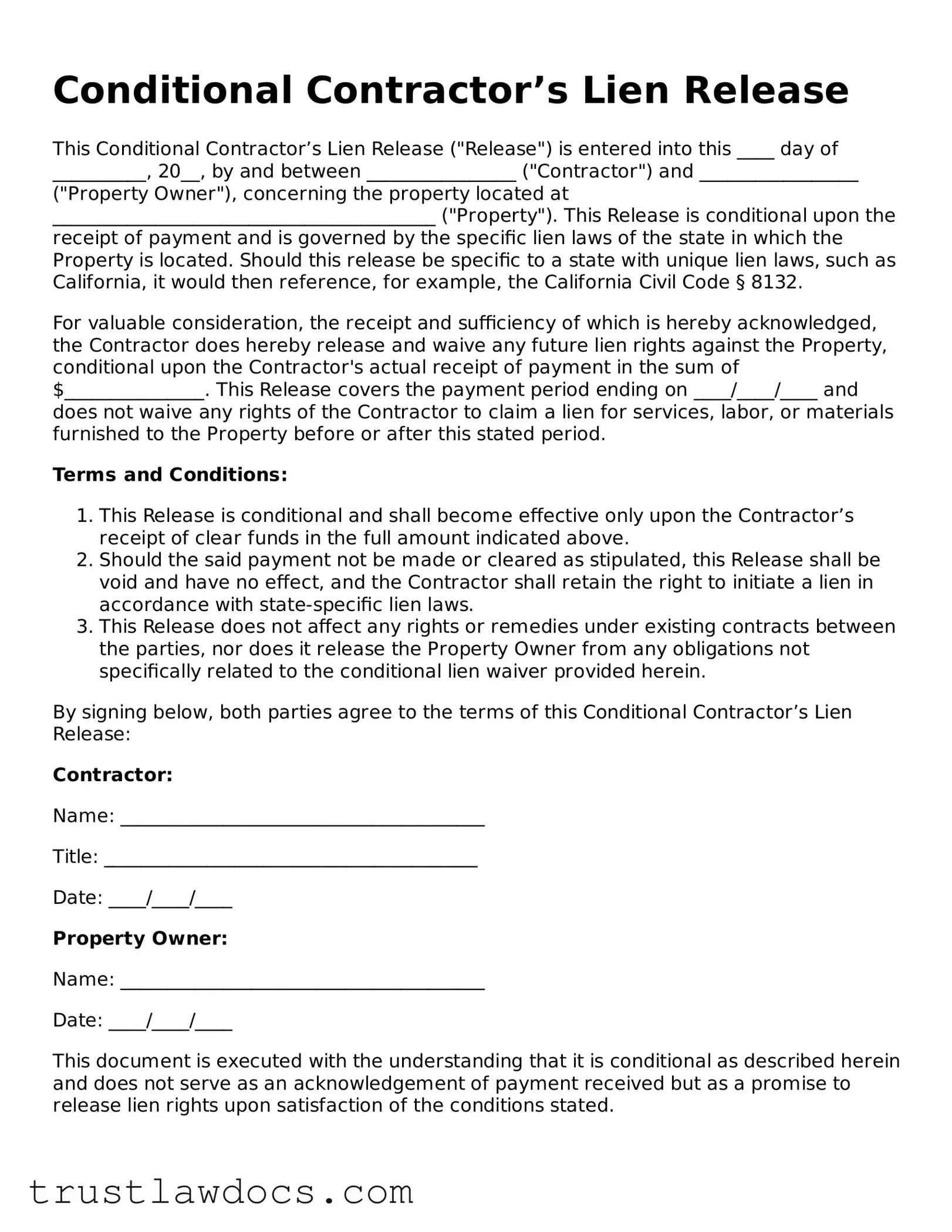Filling out the Conditional Contractor’s Lien Release form can seem straightforward, but mistakes are surprisingly common. These errors could potentially invalidate the release or lead to disputes down the line. Understanding these common pitfalls is the first step towards ensuring that the process goes smoothly.
One common mistake is not properly identifying the parties involved. It’s crucial to use the legal names of both the contractor and the property owner, ensuring they match the names used in the contract and on the property deed. Names should be spelled correctly and completely, to avoid any ambiguity about who is releasing the lien and who benefits from the release.
Another error is failing to accurately describe the work or materials covered by the lien release. This description should match what was detailed in the original contract or agreement, and it should be as precise as possible. Vague or incomplete descriptions can lead to disagreements over whether specific work or materials have been adequately compensated and should be included or excluded from the lien release.
Incorrectly stating the dates covered by the lien release is also a frequent mistake. The form should clearly indicate the timeframe during which the work was performed or the materials were supplied. This prevents any confusion about the period the release covers, ensuring it aligns with the work completed and paid for.
Not specifying the amount that has been paid or is to be paid can lead to complications. The form should clearly reflect the exact payment amount that has triggered the release, or the conditions under which the future payment will complete the release. This clarity is key to preventing disputes over payment amounts or the timing of payments.
Overlooking the conditional nature of the release is a critical error. A conditional lien release is effective only if certain conditions are met, typically the clearance of a payment check. This condition should be spelled out clearly, including what happens if the check does not clear. Failure to do so could inadvertently create an unconditional release, regardless of whether payment is ultimately received.
Failing to include a notary public’s acknowledgment can also invalidate the lien release. Many states require this step to verify the authenticity of the signatures on the form. Skipping this process could mean the release is not legally enforceable.
Another oversight is not retaining a copy of the signed release. Both parties should keep a copy for their records to provide proof of the agreement. This can be crucial if there’s a later disagreement or if the need to prove the release’s existence arises.
Signing the form without a witness is another common mistake. While not always required, having a witness sign the form alongside the parties can add an extra layer of verification and protection against claims of forgery or coercion.
Many individuals also neglect to verify that all related parties have been informed about the lien release. In some cases, notifying the lender or other stakeholders is necessary to ensure that the lien release is fully operational and recognized by all affected parties.
Last but not least, a significant error is not understanding the legal implications of signing the form. Before filling out and signing a Conditional Contractor’s Lien Release, it's important for all parties to understand what rights are being waived and under what conditions. Consulting with a legal professional can help clarify these points and ensure that the release serves its intended purpose without unintended consequences.
Understanding these common mistakes and taking steps to avoid them can help ensure that the process of releasing a lien proceeds smoothly and effectively, avoiding future disputes and legal hassles.
